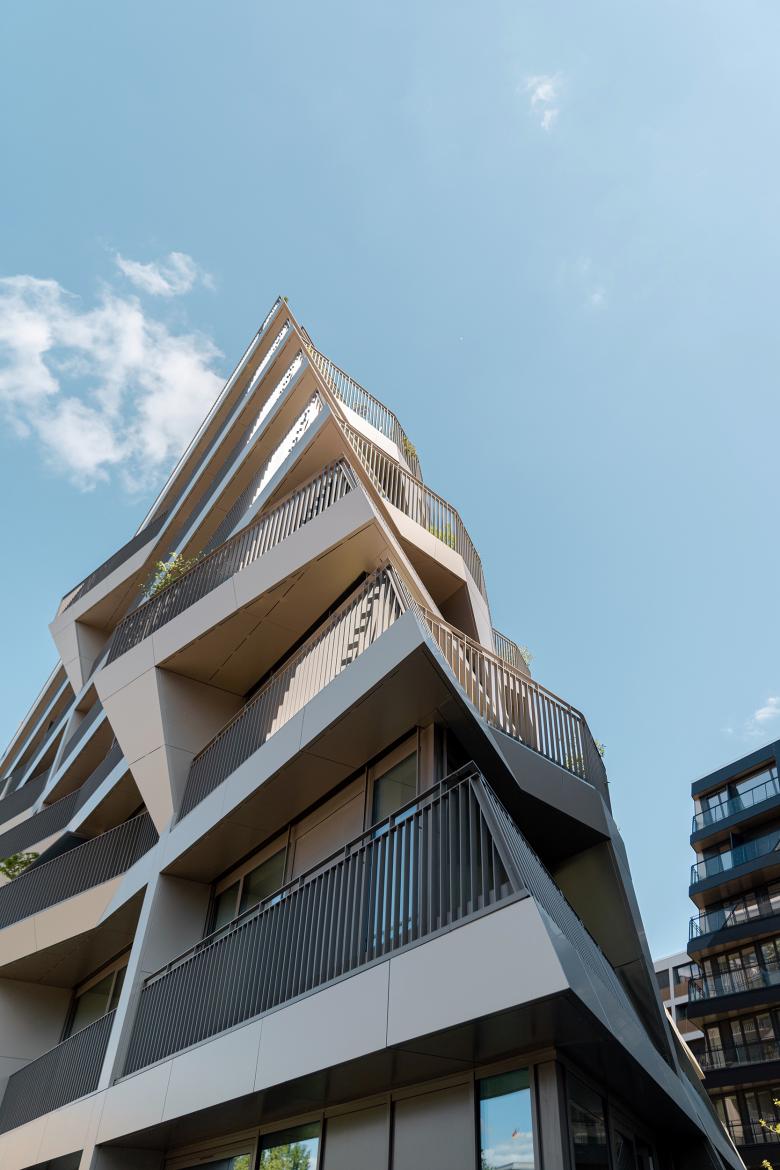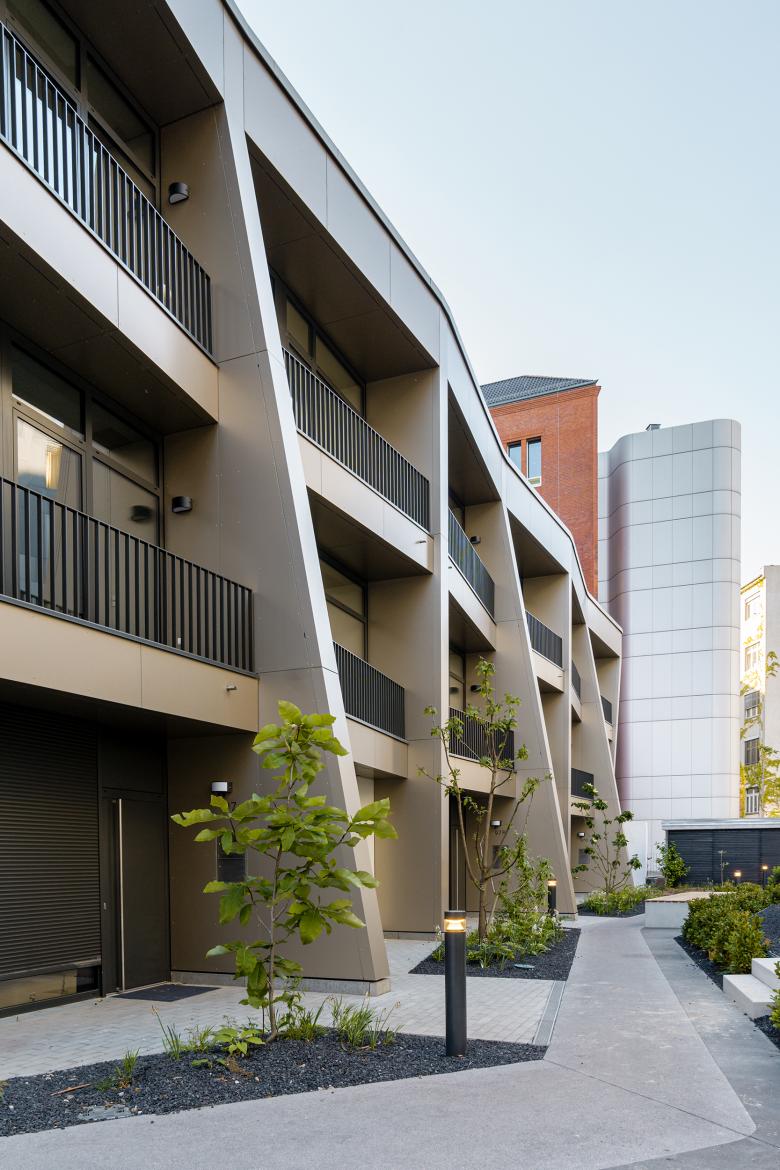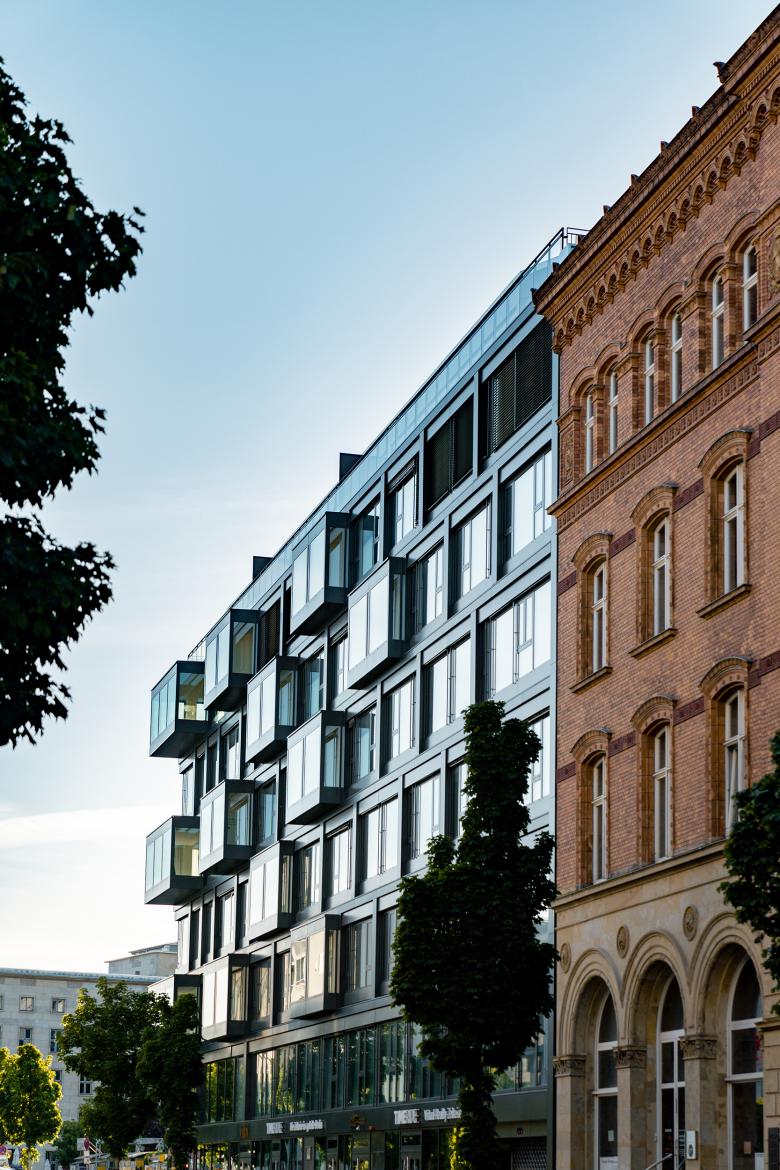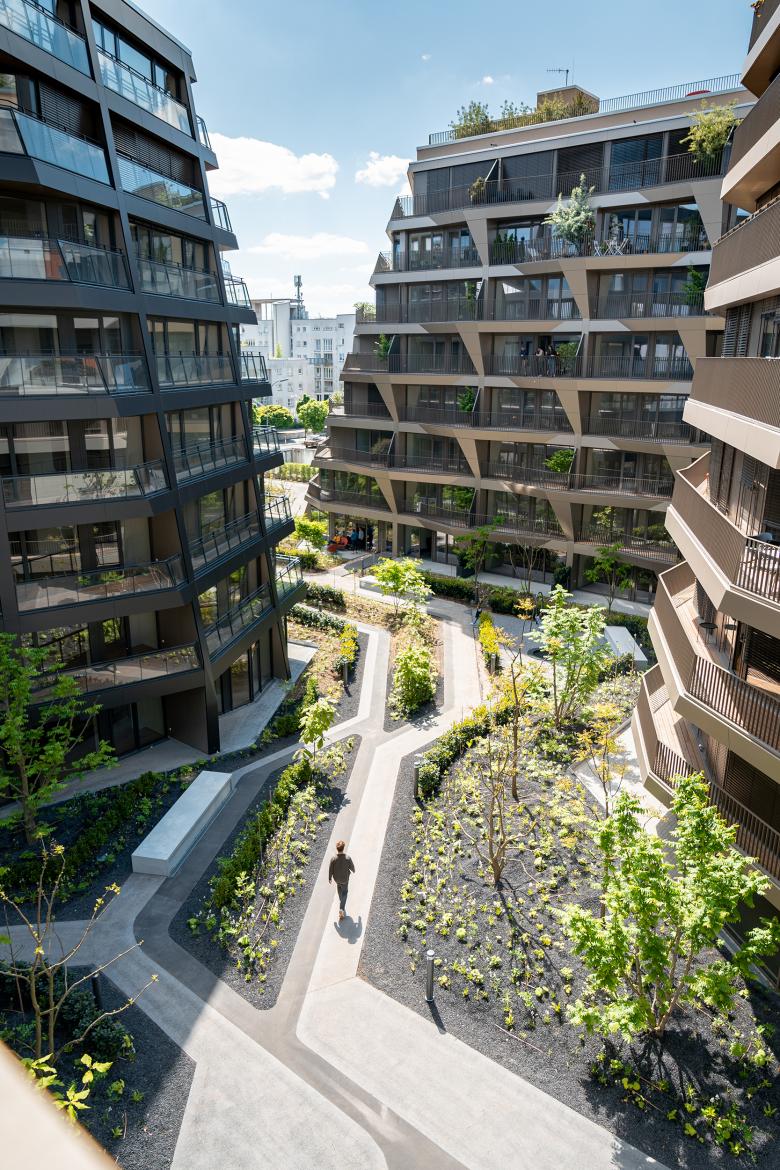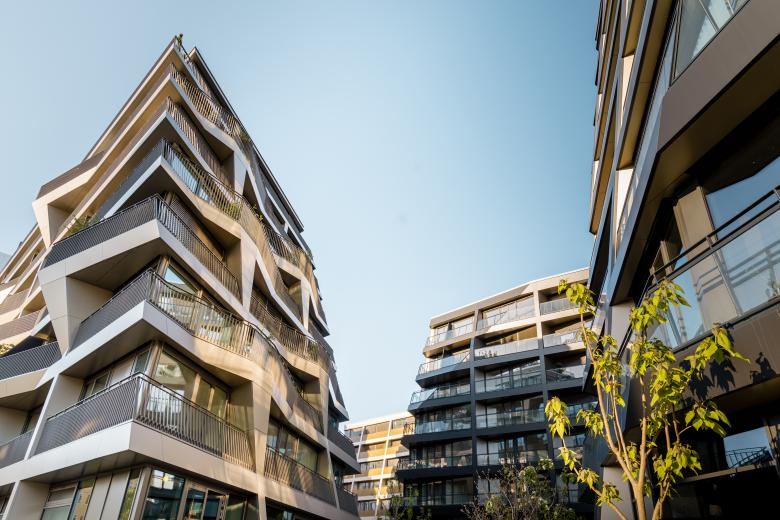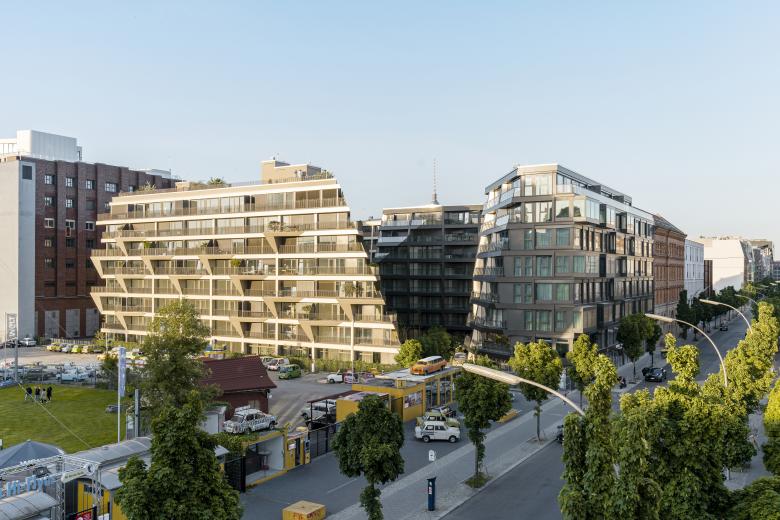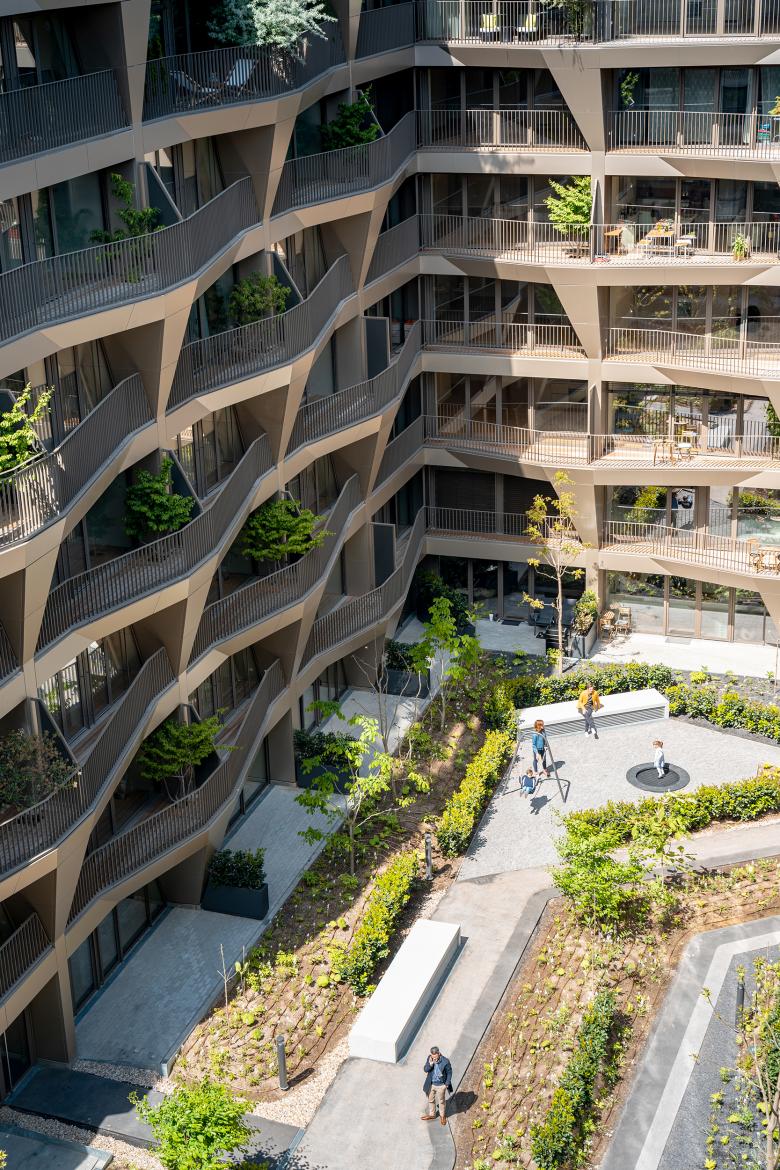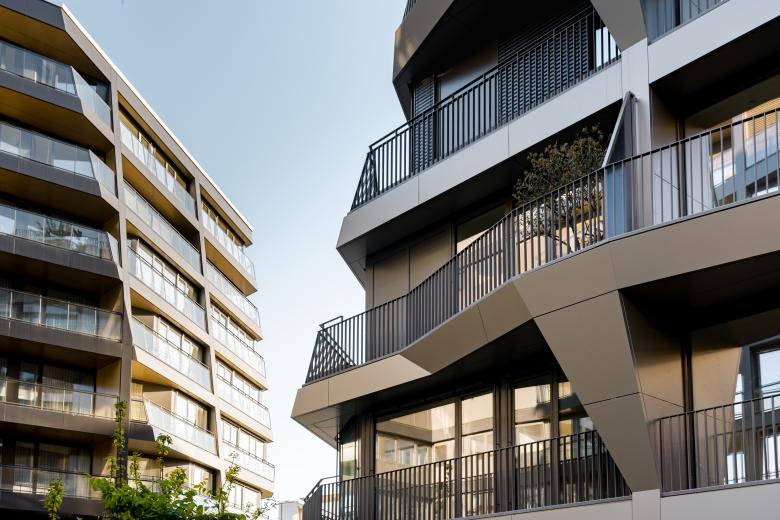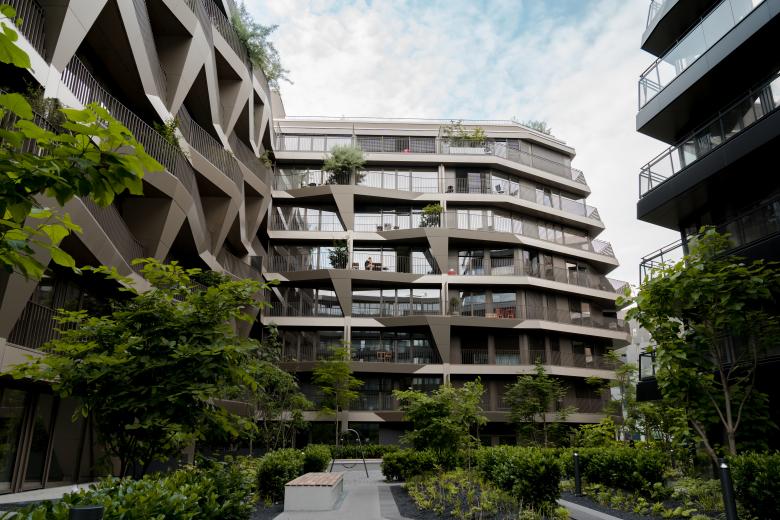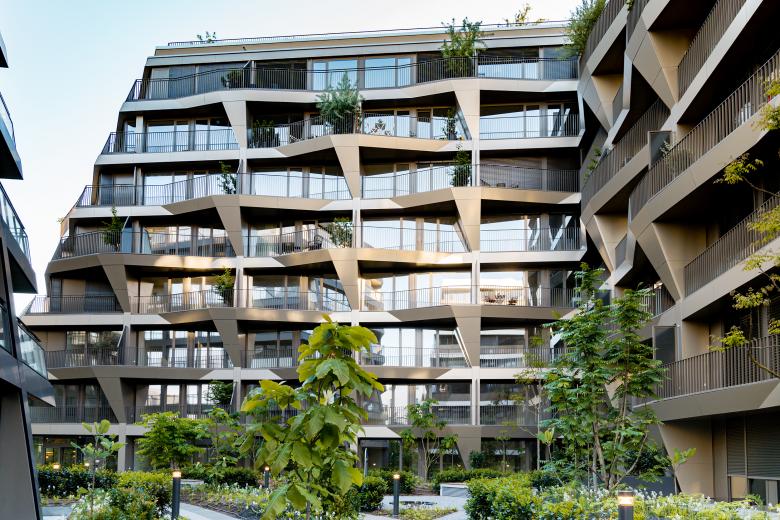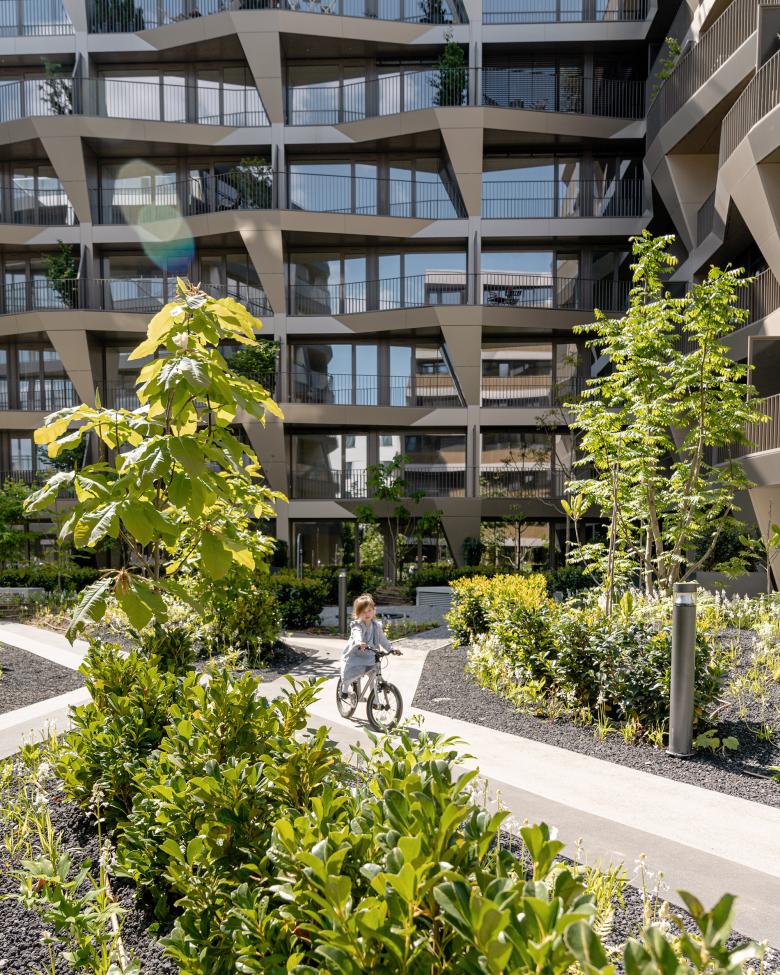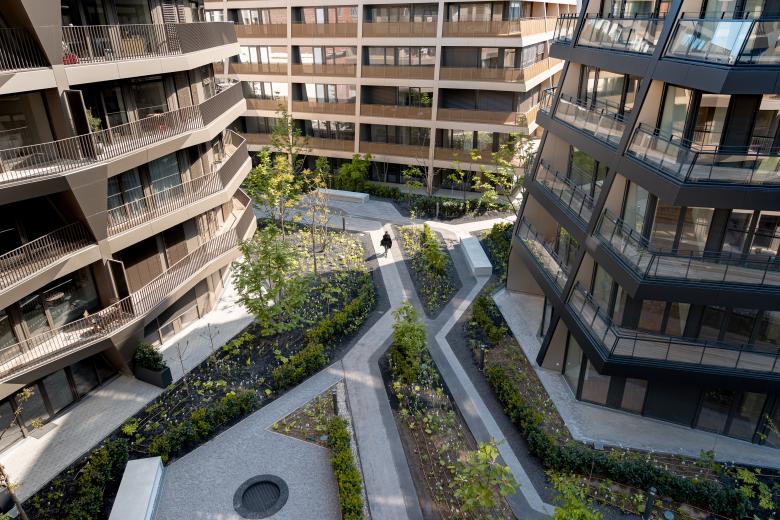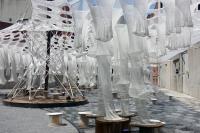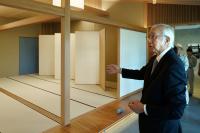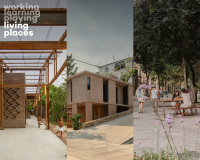Charlie Living
Berlin, Niemcy
Charlie Living is the largest newly-built predominantly residential project in Friedrichstadt, in direct proximity to former Checkpoint Charlie.
The open ensemble of four new buildings fills one of the last open lots of Berlin Mitte with its former strip of the Berlin Wall. The Graft design with its high public permeability of accessible existing paths through to the inner area of the complex connecting with the neighbouring E-Werk and hotel on Mauerstraße, stands in contrast with the otherwise closed block structure of the immediate vicinity. Against this backdrop of the Martin Gropius Building, the State Parliament Building, the “Topography of Terror” Memorial with its original pieces of the Wall, Friedrichstraße with Checkpoint Charlie and the Axel Springer Campus, the new residential ensemble marks a highly liveable dwelling in one of the most historically significant areas of Berlin. With a unit mix of 243 3-7 roomed apartments ranging from 40 to 300 m² in size, and 48 “serviced apartments,” the complex constitutes one of the largest, newly-built residential developments at this location since the 1987 International Building Exhibition IBA.
The residential complex consists of three eight-storey main buildings – Block A, B, and C and a cluster of townhouses situated within the inner block, D, which are slightly inclined towards each other, modelled polygonally and freely connected to each other by means of a green internal courtyard. This publicly accessible courtyard forms an oasis within the hustle and bustle of Berlin’s historic heart and provides pedestrians with a short-cut through its block-like structure to Mauerstraße and the middle of Friedrichstraße. All buildings convey an individual geometry and have a distinctive surface and façade concept which provides all apartments with generous loggias or balconies as transitory spaces between outside and inside.
Building A accommodates an Apartment Hotel and lobby together with retail units on the ground floor, as well as apartments situated in the side wing, opening up to the courtyard.
Along Zimmerstraße Building A stands out with its graphite-coloured, relief-like façade. Above the double-story plinth and distributed over five floors, street-facing studio-apartments with bay windows of varying projecting depths as extensions of the living area, allow views from Zimmerstraße all the way down to Checkpoint Charlie. These stepped bay windows emerge increasingly from the façade to the west to mark a deflection point into the internal courtyard. Since on the west side a future joint towards a new building is foreseen on the development plan, the main access to the inner complex was able to be repositioned “around the corner” on the western side of the site. As a result, an acoustic shielding of the courtyard areas has been achieved while retaining the greatest possible openness. The side wing of Building A serves to block off the long firewall of the neighbouring buildings to the east, orienting a large portion of the rental apartments westward towards the green courtyard. Conversely, many of these units benefit from the building joint which brings afternoon sun into the courtyard.
Building B, comprised of medium-sized apartments, was built at the eastern rear connection. Here a projecting, slightly inclined and optically pleated balcony balustrade allows varying sized balconies to be realised thereby guaranteeing natural sunlight while in the darker seasons the sun reaches the depth of the apartments. Due to its distinctive corners, the otherwise stringent building achieves a sculptural effect.
Building C, the third central structure, detaches itself conspicuously from the typological regularity due to its unexpected interwoven sculptural balcony structures. The triangular balcony areas change their orientation alternately per floor, thrusting every second floor off the façade so that the overlying balcony recedes thus creating a terraced feeling. Attached to the verticals are tree troughs, there to create a sphere of privacy. The trees appear to climb up the façade, perpetuating the green character of the inner courtyard with the outer walls.
The free-standing building enables all apartments on the western border of the property a particularly favourable exposure to light. Depending on the time of day and the incidence of light the metal façade seems to have a silvery or golden shimmer. Building C houses the club room with leisure facilities on the ground floor and a roof terrace, both of which are at the disposal of all residents.
Hidden at the back of the courtyard area is Building D, a three-storey structure with six townhouses on offer. Each of the units is equipped with a front terrace, cellar and garden constituting an inner-city residential area providing high-quality urban dwelling.
All buildings and individual sections serve the broader idea of public accessibility and the elimination of the strict separation of private courtyard and public space. Charlie Living proves that these qualities are not mutually exclusive and that a premium residential address in a central yet quiet location is possible with the highest openness to the urban public. Perhaps, a precedent for a sustainable and highly liveable urbanity.
- Architekci
- GRAFT
- Location
- Zimmerstraße 92-94, 10117 Berlin, Niemcy
- Year
- 2018
- Client
- Trockland Management GmbH
- Team
- Wolfram Putz, Aleksandra Zajko, Alexandra Tobescu, Altan Arslanoglu, Anika Klos, Antonio Luque, Aurelius Weber, Cristina Freni Dennis Hawner, Djordje Zdravkovic, Dorothea Freiin von Rotberg, Evgenia Dimopoulou, Inga Anger, Iulian Ivan, Jakub Wreczycki, Jerzy Gerard Gabriel, Jia Chen, Julie Hoffmann, Konstantin Buhr, Lidia Beltran Carlos, Maria Angeles Orduna, Marta Piaseczynska, Mathilde Catros, Mats Karl Koppe, Matthias Eckardt, Oliver Rednitz, Primoz Strazar, Relana Hense, Sascha Krückeberg, Sven Bauer, Veronika Partelova, Thomas Willemeit, Agata Glubiak, Lars Krückeberg, Stefanie Götz
- Project Type
- Newly constructed residential complex with 243 rental units, retail and hotel with basement parking
- Size
- 33,100 m2
